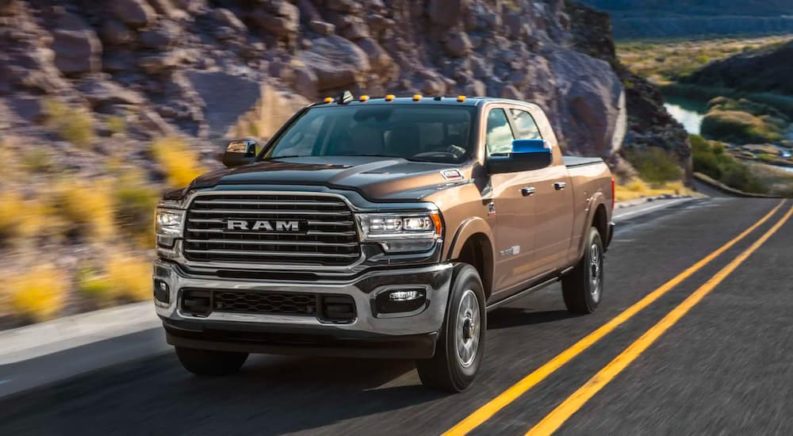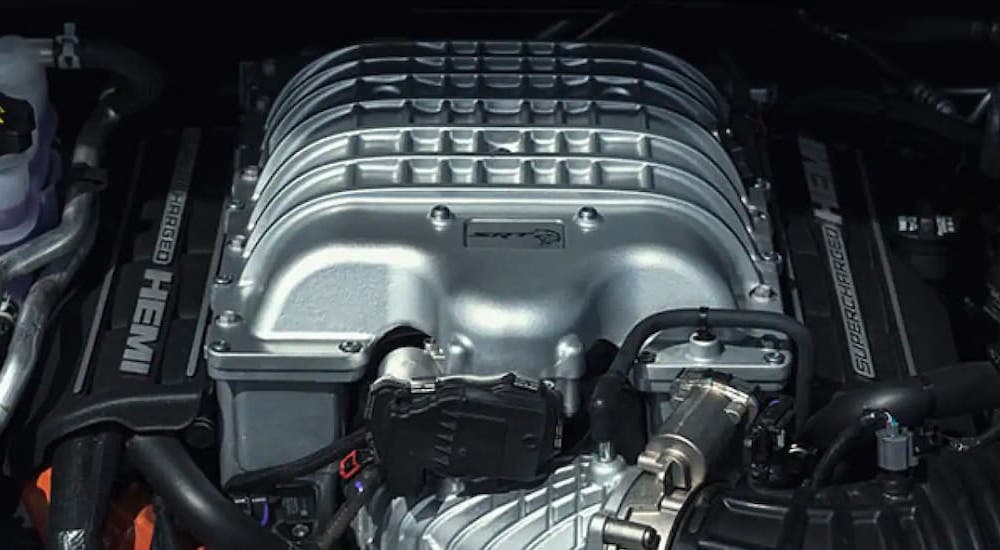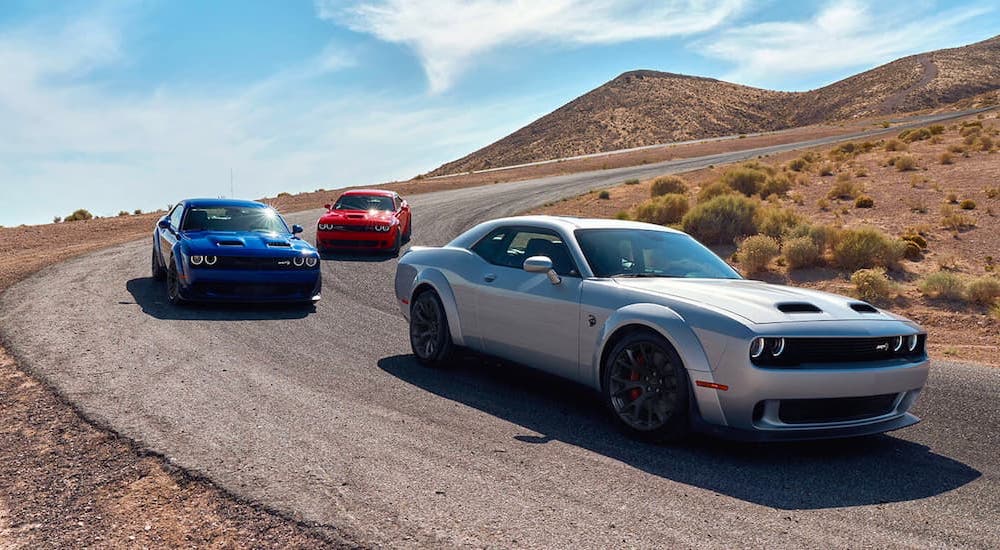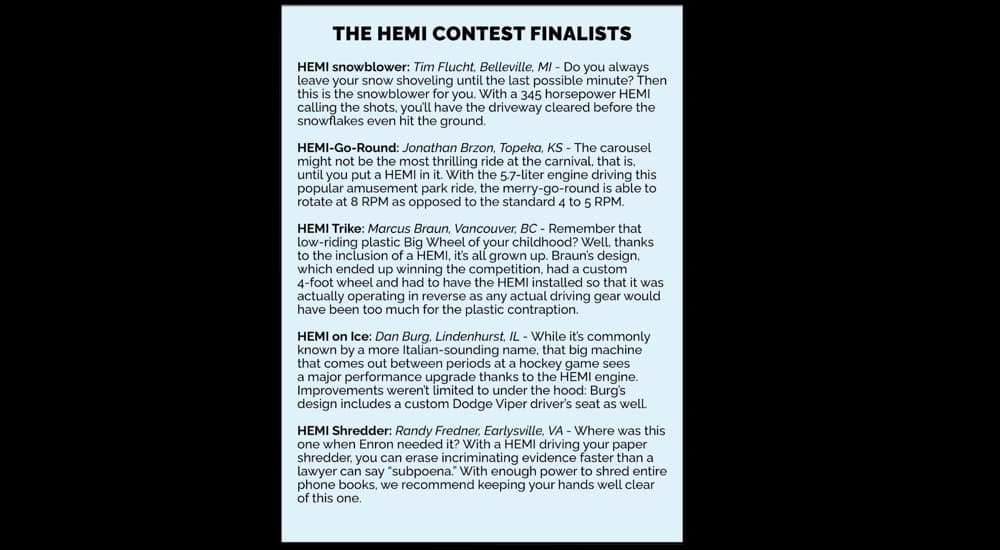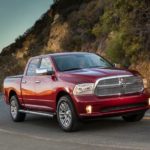While Ram’s HEMI engines are a marvel of modern engineering in their own right, most drivers are more familiar with the viral marketing campaign that had people flocking to their nearest Ram dealership with the brand name on the tip of the nation’s tongue for a brief span in the mid-2000s. The ad, designed to showcase the engine’s starring role in the 2005 Ram 1500 HEMI, captured the public’s imagination, made the brand synonymous with the concepts of power and performance, and had people yelling at strangers during red lights in a way not seen since the “Pardon Me, Do You Have Any Grey Poupon?” era.
But what exactly is the HEMI? A powerful engine, sure, but what made this innovative technology such a game-changer? Join us as we dive in for a closer look at Ram’s HEMI engines and their history and discover why this particular engine is still the go-to choice for Ram truck drivers seeking unparalleled performance.
Battlefield Ingenuity Breeds a New Class of Engine
While the HEMI made its modern-day debut in 2005, the concept of a hemispherical cylinder head (thus, “HEMI”) dates back to World War II. Originally designed by Chrysler as an experimental upgrade to the Army Air Force’s P-47 Thunderbolt fighter plane, the 16-cylinder HEMI was tested in the aircraft in 1945 but never went into production as the war was already nearing its conclusion. This experiment would prove fateful, however, as Chrysler was able to roll over its research on the intriguing new design into the civilian sector, culminating in the debut of the first HEMI engine in 1950.
Marketed under the name FirePower on Chrysler products (and as FireDome and Red Ram on DeSoto and Dodge products, respectively), the original 331 cubic inch (5.4-liter) V8 engine was capable of producing 180 horsepower. While this might seem modest by today’s standard, at the time, it immediately shifted perceptions around just what an internal combustion engine could do. The technology was quickly able to earn its place at the table, with a HEMI-powered Cunningham C-5R making waves at some of the most prestigious events in international motorsport. This included a third-place finish at the lengthy 1953 24 Hours of Le Mans, a particularly bright feather in the cap of this cutting-edge technology that went a long way in demonstrating not only the engine’s power, but its durability as well.
The HEMI was refined throughout the ’50s and ’60s, eventually growing into a massive 426 cubic inch (7.0-liter) design capable of producing up to 425 horsepower. The breakthrough technology saw Chrysler become an immediate contender on racing circuits and earned it the kind of rarefied press that can’t be replicated with clever commercials: in 1964, the 426 cubic inch HEMI could be found under the hood of the first, second, and third-place finishers at the Daytona 500.
But how does a HEMI work? What makes it better than a traditional engine design? As alluded to earlier, the engine takes its name from its novel hemispherical cylinder heads. This design increases the surface-to-volume ratio within each cylinder, improving peak pressure while reducing heat loss and maximizing the power produced in every stroke. A HEMI engine can also accommodate larger valves than normal on either side of the cylinder head, maximizing airflow while improving overall performance.
The HEMI does come with a few limitations, however. Due to the large cylinder heads and the unique dimensions of the engine’s rocker arms, HEMI engines are generally wider than average and cannot be squeezed into smaller types of vehicles. The unusual center position of the spark plugs gives the chambers a strong flame front but also makes the HEMI uniquely sensitive to fuel octane, requiring drivers to take special care when filling up at the pump. Finally, the HEMI’s larger valves can be a limiting factor. While most modern vehicles used a smaller four-valve design to increase airflow, it is almost impossible to design a HEMI that can accommodate more than two valves per cylinder.
Always Room for Improvement
The HEMI introduced by that viral commercial in 2005 was a major departure from the original 1950’s design. The 5.7-liter V8 was still as powerful as ever, but the namesake hemispherical head had been scaled back in favor of a flatter, though more complex, design. With a coil-on-plug ignition system, the modern Ram HEMI was a major technological overhaul of the half-century-old concept. The updated HEMI also featured two spark plugs per cylinder, a concession to modern standards that improved combustion efficiency while simultaneously reducing emissions.
Delivering on the legend of its predecessors, the HEMI has since carved out a loyal following within the auto community. The 5.7-liter / 345 cubic inch design is still in wide use today as the flagship gas engine of every Ram 1500 produced since 2003 (the Heavy Duty models received their own HEMI in 2009). While the rugged pickup is perhaps most closely associated with the storied engine, the modern HEMI can be found under the hood of a number of current models from the Chrysler family, including the Dodge Charger and Challenger, the Chrysler 300, and the Jeep Grand Cherokee and Wagoneer.
The HEMI has been improved a number of times since its 2003 reintroduction. In 2009, Chrysler introduced Variable Camshaft Timing (VCT) into the design. By controlling the flow of oil to a camshaft sprocket device, the camshaft timing can be subtly adjusted to run faster or slower. This not only improves overall engine performance, but also reduces emissions and increases fuel efficiency. The cylinder heads were also redesigned to improve airflow, giving the 2009 through 2012 generation of Ram 1500s an impressive 390 horsepower and 407 pound-feet of torque.
While the HEMI has become the engine of choice for a range of track-ready muscle cars, truck-specific designs have always been the focus at Ram. In 2014, the automaker introduced a larger 6.4-liter HEMI for Ram 2500 and 3500 trucks, as well as Ram 3500, 4500, and 5500 Chassis Cab models. Designed with an emphasis on delivering the type of consistent, torquey power needed for towing and hauling, the new engine boasted 410 horsepower and 429 pound-feet of torque.
In a bid to differentiate its line of high-performance off-road trucks, Ram introduced a nefarious-sounding HEMI overhaul into the market in 2021. The 6.2-liter Hellcat was tapped to power the RAM 1500 TRX and give the brand a leg-up in the competitive high-performance pickup segment. Rated at 707 horsepower and 650 pound-feet of torque, the Hellcat is not only a paragon of power; it’s the most powerful engine ever put in a production pickup. The massive HEMI wouldn’t be out of place in a muscle car, and, incidentally, it isn’t. The mighty supercharged engine got its start powering a wide range of high-performance models, including the Dodge Challenger SRT Hellcat, Jeep Grand Cherokee Trackhawk, and Dodge Durango Hellcat.
Owing largely to that fateful 2005 commercial, the HEMI has become a pop-culture symbol in its own right. Ram has been a good sport about the whole thing, leaning into the notoriety and having some fun with it along the way. This has culminated in a number of fun promotions to highlight the HEMI brand, including the 2005 “What Can You HEMI?” contest where Chrysler implored fans to submit their designs for extracurricular applications of the engine. Finalists included a HEMI snowblower, merry-go-round, and ice resurfacer.
Whether it’s powering an experimental World War II fighter plane, a carousel, or some of the most powerful cars and trucks ever to hit the asphalt, the HEMI name will always be associated with power and performance. The unique design has been continually refined over the last 50 years, integrating some of the most important advances in automotive technology into an already impressive package. There’s a reason Ram has stuck with the legendary engine for nearly two decades: for a certain set of drivers who expect the very best out of their pickups, there’s simply no beating a HEMI. If you’ve never experienced the acclaimed HEMI engine for yourself, it’s never too late. Visit your local Ram dealership today and test drive a HEMI-powered Ram truck. One lap around the block with a HEMI engine leading the way, and you might be tempted to start bragging to strangers at stoplights as well.

